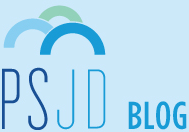Above or Below the Line: Poor? Near Poor? Low-Income? Kinda Poor?
Hi everyone! I hope you all had a wonderfully relaxing Thanksgiving with lots of friends and family! After family-time, sleeping off severe gluttony, getting my bar card in the mail, and a bit of shopping, I’m back on track over here. 🙂
You may already know about the new measure of poverty — the Supplemental Poverty Measure (SPM) — that the Census Bureau released earlier this month. If you didn’t know, read this from HuffPost and this from the Census Bureau.
The new measurement reveals higher overall poverty rates and higher rates for some groups, including Whites, Asians and Hispanics, individuals between the ages of 18 and 64 and those 65 or older.
However, SPM rates are lower for children.
In my opinion, a poverty measure like this, while not perfect, needed to be implemented decades ago. The original measure, established in the 1950s, had not changed much in the 60 years.
The original measure is based on the costs of feeding a family of four. Because, according to this model, food should cost one-third of your income, multiplying that number by 3 gives us the poverty threshold. Anyone making less than that number, is considered “poor.” Anyone falling anywhere above that number is not.
This measure does not take inflation (other than for food), regional costs, actual food costs, various incomes and health care costs into account. The new SPM is a step in the right direction in using a measurement that is more reflective of our current economy and reality.
Anyway, I’ve digressed from what I actually wanted this post to be about… Last week, the New York Times published an article on the new poverty rates according to SPM and how a contentious debate has been set off about how to describe families that are technically above the poverty line but still struggle to make ends meet.
The findings [on the “near poor”], which the Census Bureau plans to release on Monday, have already set off a contentious debate about how to describe such families: struggling, straitened, economically insecure?
Robert Rector, an analyst at the conservative Heritage Foundation, rejects the phrase “near poverty,” arguing that it conjures levels of dire need like hunger and homelessness experienced by a minority even among those actually poor.
“I don’t have any objection to this measure if you use the term ‘low-income,’ ” he said. “But the emotionally charged terms ‘poor’ or ‘near poor’ clearly suggest to most people a level of material hardship that doesn’t exist. It is deliberately used to mislead people.” . . .
[Bruce Meyer, an economist at the University of Chicago said] “I do think this is a better measure, but I wouldn’t say that 100 million people are on the edge of starvation or anything close to that[.]”
I’ve always struggled with the arbitrariness of categorizing a family as “poor” or not poor. Poverty in the U.S. looks different than it does in other countries — and just because “100 million people [aren’t] on the edge of starvation” doesn’t mean they aren’t “poor.”
What do you think of the new Supplemental Poverty Measure? How about this categorization debate?

